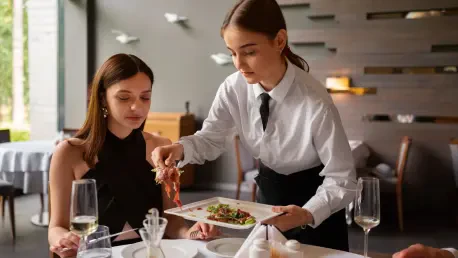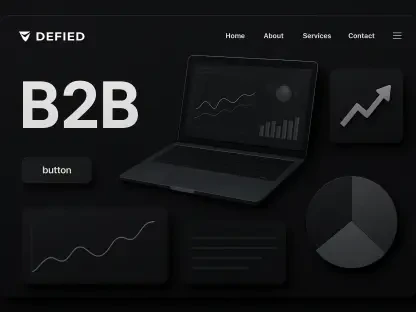In an era where digital presence defines brand success, imagine a local restaurant struggling to fill tables despite offering exceptional cuisine, simply because it lacks visibility online. With over 65% of consumers actively following food and lifestyle topics on social platforms, the restaurant industry stands at a crossroads where social media is no longer optional but essential. This guide dives into best practices for leveraging social media to boost revenue, build loyalty, and stand out in a crowded market, offering actionable strategies for restaurant owners and marketers eager to transform digital engagement into tangible growth.
Why Social Media Strategies Are Vital for Restaurants
The competitive landscape for restaurants has shifted dramatically, where exceptional dishes and top-notch service alone cannot guarantee success. Social media has emerged as a game-changer, providing a direct line to customers and a platform to showcase unique offerings. Brands that harness these digital tools effectively see not only increased visibility but also substantial financial gains, with data showing an average revenue increase of 9.9% in recent years for those with strong tactics, and an impressive 14.1% for social-first brands that prioritize online strategies.
Beyond revenue, social platforms offer unparalleled opportunities for customer engagement and broader reach. A significant portion of the population—around 65% of consumers—engages with food-related content online, making it one of the largest communities on social media. This vast audience presents restaurants with a chance to connect on a personal level, turning casual followers into loyal patrons through consistent and meaningful interactions.
The stakes are high, as failing to adapt to this digital shift risks losing relevance in an industry where visibility often trumps proximity. Restaurants that invest in social media strategies position themselves to capture attention in a saturated market, ensuring they remain top of mind for diners planning their next meal. This guide explores how to tap into these benefits with practical, proven approaches.
Key Social Media Strategies for Restaurant Growth
Building a Loyal Community Through Engagement
Creating a sense of community is at the heart of a successful social media strategy for restaurants. With 41% of consumers who follow brands on social platforms specifically tracking restaurant accounts, there’s a ready audience waiting to connect. Social-first brands understand this, as 93% of them prioritize community management compared to just 63% of less-savvy counterparts, focusing on active dialogue to build trust and loyalty.
Effective community building starts with social listening—monitoring comments, reviews, and mentions to understand customer sentiments. Responding promptly to feedback, whether positive or negative, shows diners that their opinions matter, fostering a deeper connection. Hosting interactive content like polls, Q&A sessions, or live streams can further encourage participation, turning passive followers into active brand advocates.
Case Study: Community Engagement in Action
Consider a mid-sized bistro that transformed its online presence by dedicating time to engage with followers. By consistently replying to customer comments and hosting weekly virtual cooking demos on social media, the bistro cultivated a tight-knit following. This approach led to a noticeable uptick in repeat visits, as customers felt a personal bond with the brand, proving that genuine interaction can translate into sustained business growth.
Collaborating with Content Creators for Wider Reach
Partnering with influencers and content creators offers restaurants a powerful yet often underutilized avenue for expanding their audience. Despite being ranked as a lower-priority strategy by many brands, 46% recognize creator collaborations as delivering the second-highest return on investment after loyalty programs. With 83% of consumers trusting creators as credible sources, and one in three discovering new brands through their content, this tactic holds immense potential.
To implement this strategy, restaurants should identify creators whose audience aligns with their target demographic, focusing on local food bloggers or micro-influencers for authenticity. Offering complimentary meals or exclusive previews in exchange for honest reviews can generate buzz, while co-creating content like recipe videos ensures organic promotion. Clear communication about expectations and goals helps maximize the partnership’s impact on brand visibility.
Example: Boosting Visibility Through Influencer Partnerships
A small diner recently partnered with local food influencers to promote a seasonal menu launch, inviting them for a tasting event and encouraging posts about their experience. The campaign resulted in a sharp increase in social media mentions and a 20% spike in foot traffic over the following month. This success illustrates how targeted collaborations can amplify reach and draw new customers through trusted voices in the community.
Driving Conversions from Online to In-Store Visits
Bridging the gap between digital engagement and physical visits remains a critical focus for restaurants aiming to turn likes into sales. Research indicates that 51% of restaurants find promoting in-person events via social media to be the most effective method for driving foot traffic. Crafting campaigns that highlight unique dining experiences or limited-time offers can motivate followers to step through the door.
Optimizing for mobile users is equally important, as 48% of brands note the significance of seamless platform experiences in encouraging action. Ensuring that social profiles include easy-to-access reservation links or location details simplifies the transition from online interest to in-store visits. Additionally, targeted ads with clear calls to action, such as “Book Now” or “Visit Today,” can further incentivize immediate responses from potential diners.
Case Study: Turning Followers into Customers
A regional restaurant chain ran a social media campaign promoting a limited-time discount, using geo-targeted ads to reach nearby followers. By pairing the promotion with a mobile-friendly booking system directly linked from their profile, the chain saw a 30% increase in reservations within two weeks. This example underscores the importance of aligning online efforts with practical tools that facilitate real-world outcomes.
Crafting a Social-First Future for Restaurants
Looking back, the journey through these best practices reveals how social media has transformed from a mere marketing tool into a cornerstone of restaurant success. The focus on building loyal communities, partnering with creators, and driving conversions provides a roadmap for turning digital interactions into measurable revenue growth. Each strategy highlights a unique facet of engagement that, when combined, creates a robust framework for sustained impact.
Moving forward, restaurant owners and marketers are encouraged to take incremental steps toward adopting a social-first mindset. Begin by testing community engagement tactics on a single platform, then explore creator collaborations with a modest budget, and finally, refine conversion campaigns with data-driven adjustments. Small to medium-sized establishments can gain a competitive edge, while larger chains maintain relevance by staying agile in platform selection and resource allocation.
As the digital landscape continues to evolve, staying ahead will require ongoing experimentation with emerging trends and technologies. Restaurants that embraced these practices in the past have set themselves up for long-term loyalty and profitability. Now, the challenge lies in adapting these lessons to future opportunities, ensuring that every post, partnership, and promotion serves a purpose in building a thriving dining experience.









